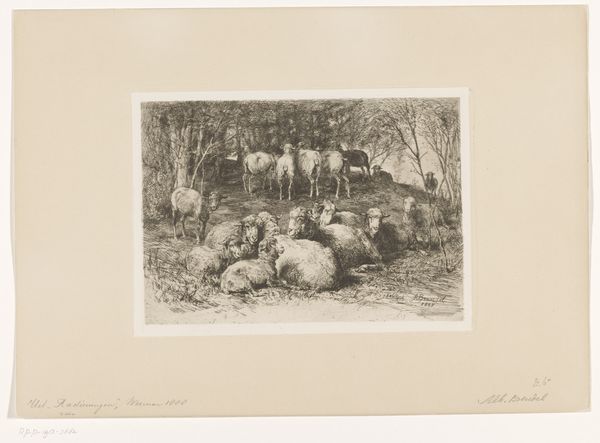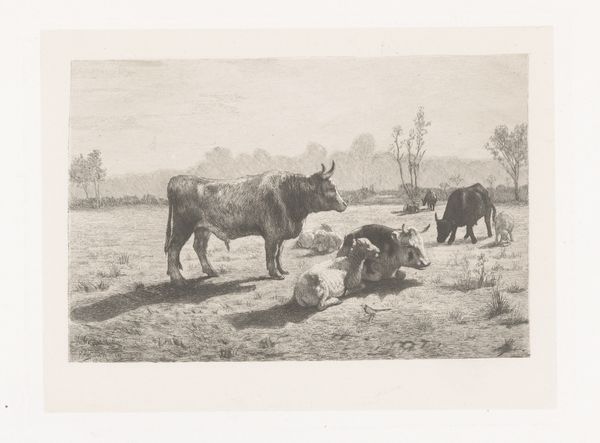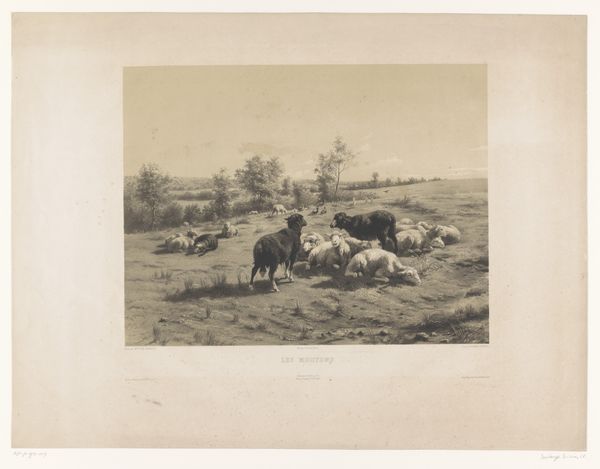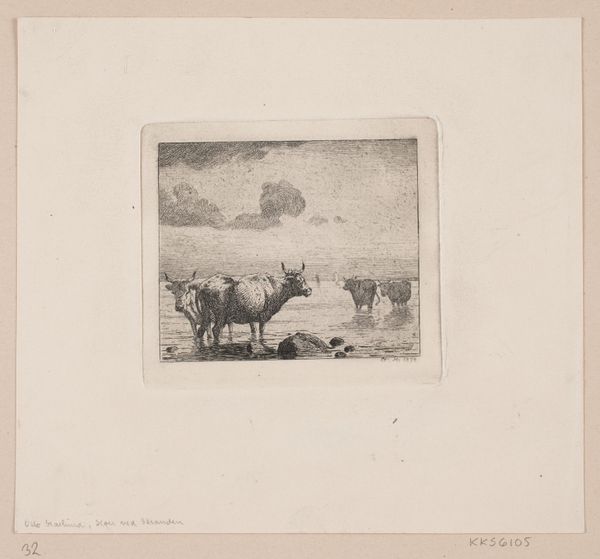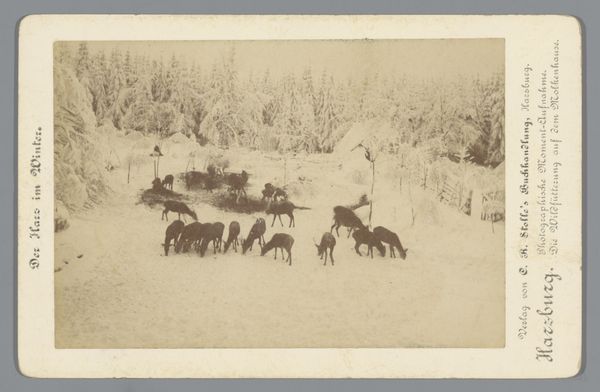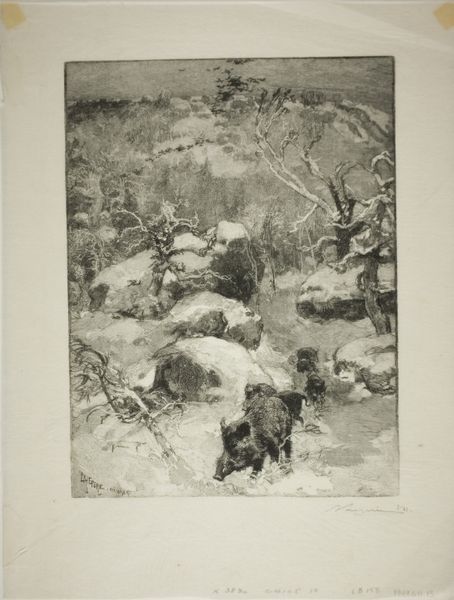
etching
#
etching
#
landscape
#
realism
Dimensions: height 267 mm, width 357 mm
Copyright: Rijks Museum: Open Domain
Curator: Brrrr, just looking at this landscape etching from 1885 sends a chill down my spine. It’s titled "Vluchtende Zwijnen in de Sneeuw" which translates to "Fleeing Boars in the Snow" and was crafted by Conrad Ahrendts. The bleakness, it just… oozes off the paper, doesn’t it? Editor: Absolutely! It's more than bleak; there’s a tension. It speaks volumes about the wild, relentless struggle for survival amidst a landscape marked by stark inequality and systemic oppression, not just for the animals. Who benefits and who suffers here? Curator: Oh, that’s interesting! I was just caught up in the surface— the immediate drama of the scene. These frantic movements of boars disrupt the seemingly peaceful snowy forest. Ahrendts captures the chaotic energy so well through his use of light and shadow. The stark contrasts makes it more real and emotional to me. Editor: Right, but I feel like the seemingly peace is always precarious, never a default setting! These boars are literally fleeing something... Think about land enclosure and ecological changes; even a peaceful landscape has a power structure, an active participant. Curator: Well, now that you point it out... The boars *are* pretty agitated, bursting out from the snow. Almost comically so with the way some of them are tumbling about. Are they really escaping a hunt, or are we perhaps also invited to imagine some personal disturbance? Ahrendts made it at his estate in Weimar, after all. Editor: Personal disturbances often mirror wider social disturbances, don’t they? That’s why I like to imagine myself at the edges of the frame, in the periphery, like that lone figure in the distance between the boars and the looming threat. Curator: You do have a knack for finding the margins. Now I feel myself almost transported. To consider such layers of interpretation gives us room to move around the landscape as well, making us question everything. So much deeper than first glance, it brings this wild escape to new meaning! Editor: Exactly! Ahrendts is not just offering us realism, but a mirror— one reflecting a landscape of power, survival, and continuous negotiation. It prompts reflection beyond its literal portrayal. I think. Curator: I agree. From a landscape of running boars to a running commentary of cultural observations. Perhaps Ahrendts unknowingly provided just the platform we needed.
Comments
No comments
Be the first to comment and join the conversation on the ultimate creative platform.


